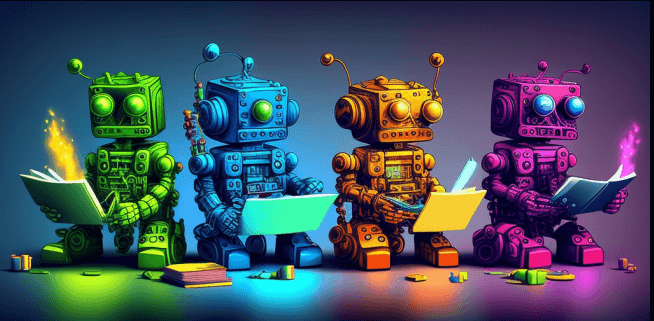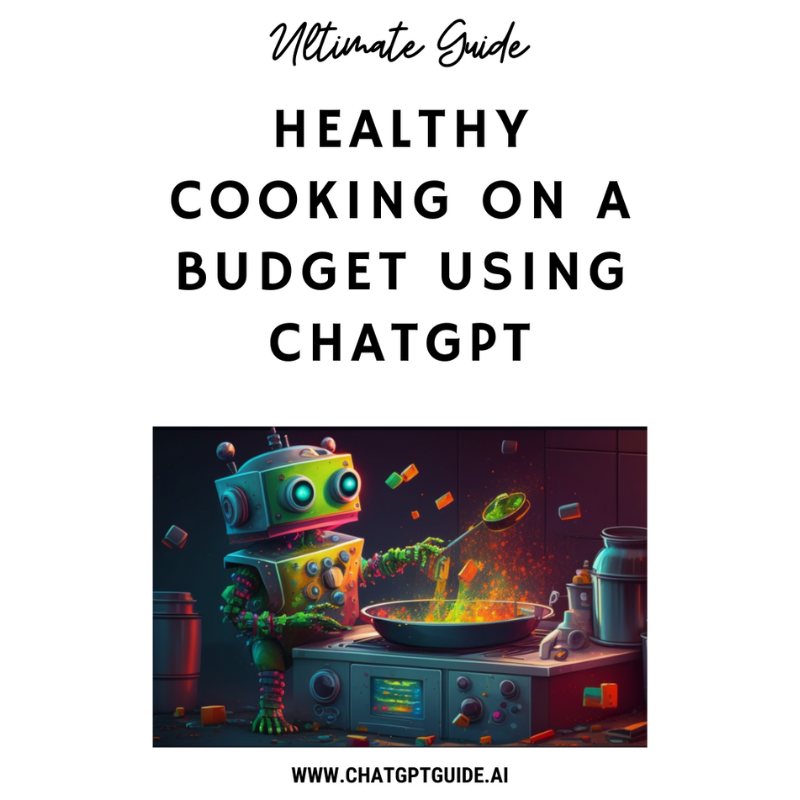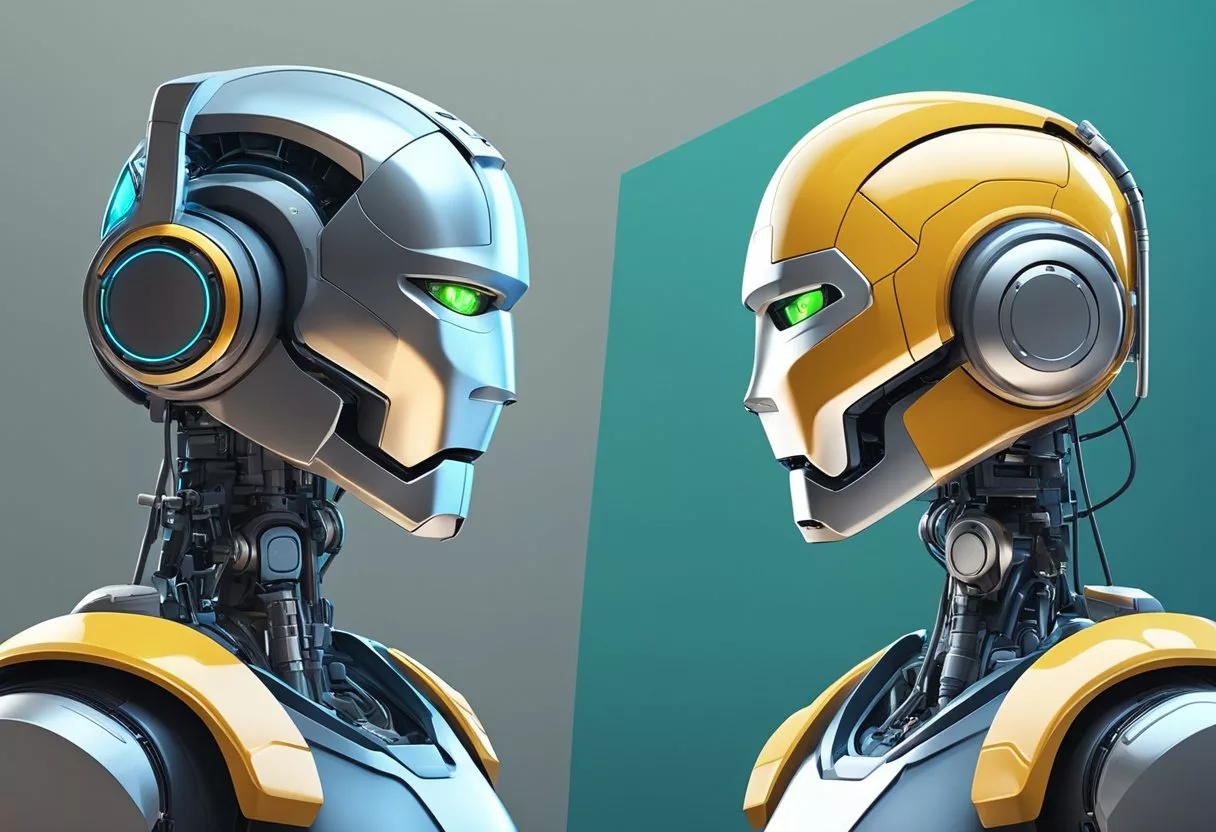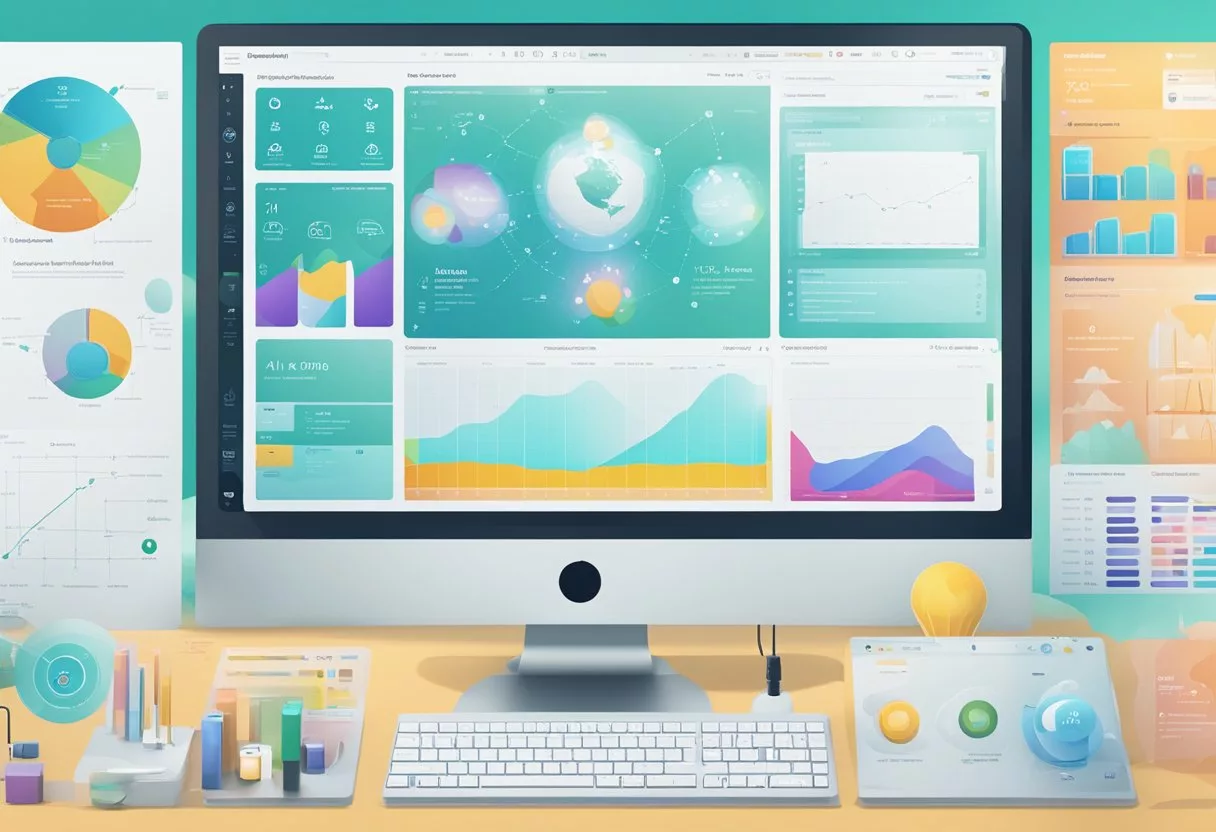As a teacher, you know the challenges that come with teaching young minds. Each child is unique, learns at their own pace, and needs personalized attention. How can you cater to all their needs while ensuring a high-quality education that fosters their curiosity and creativity?
Imagine if you had a teaching assistant who could adapt to each child’s learning pace, answer their myriad questions, and engage them in stimulating conversations to spark their curiosity. Or a teaching assistant that could handle those soul-destroying admin tasks? An assistant that doesn’t need a coffee break, works 24/7, and is always patient and consistent. Sounds too good to be true?
Meet your new digital teaching assistant, ChatGPT!
ChatGPT can be a storyteller, a quizmaster, a homework helper, and much more. Think of it as a Swiss Army knife in your teaching toolbox.
In this guide, we’ll dive into the nitty-gritty of using ChatGPT in the classroom as well as how it can help with your admin tasks.
Lastly, AI isn’t here to replace teachers but to empower you. It can take over some of the more mundane tasks, like grading multiple choice quizzes, and providing basic explanations for common questions giving you more time to focus on what matters most – your students.
Who loves teacher admin? ChatGPT does!
Drafting emails and announcements
ChatGPT can help you whip up awesome emails and announcements? It offers suggestions and templates to make your life easier.
“Compose a friendly email to parents about an upcoming parent-teacher conference.”
More Prompt Ideas
- “Compose a reminder email for a staff meeting: [add some bullet points]”
- “Create an announcement about a school-wide competition: [add some bullet points]”
- “Draft a welcome email for new students and families.”
Creating lesson plans and worksheet templates
ChatGPT is a real-time-saver for teachers when it comes to generating lesson plans and worksheets, giving you more time to focus on your students.
“Create a lesson plan template for a week focusing on learning about shapes for early years students.”
More Prompt Ideas
- “Design a lesson plan template for teaching early years students about colors.”
- “Create a worksheet template for practicing counting from 1 to 20.”
- “Develop a template for a daily schedule in an early years classroom.”
- “Design a worksheet for learning upper and lowercase letters.”
- “Create a template for teaching basic addition and subtraction.”
Generating discussion questions for class activities
Need some engaging discussion questions? ChatGPT has your back! It’ll help you get those little minds thinking and talking – and save your brain power as a teacher.
“Provide 5 discussion questions related to the story of Goldilocks and the Three Bears.”
More Prompt Ideas
- “Create 5 discussion questions for a story about sharing and friendship.”
- “Provide 5 questions to encourage a conversation about healthy eating.”
- “Come up with 5 questions to discuss a nature walk experience.”
- “Generate 5 questions for discussing feelings and emotions.”
- “Suggest 5 questions to discuss the importance of teamwork.”
Providing feedback on student assignments
ChatGPT is great at offering constructive feedback on your students’ work, making your teaching job easier and helping them improve.
“Suggest feedback for a student’s short story about their imaginary friend.”
More Prompt Ideas
- “Suggest feedback for a student’s answer of their family. [paste answer]”
- “Provide feedback suggestions on a student’s presentation about their favorite animal.”
- “Review and give suggestions for a student’s letter-writing assignment. [paste assignment]”
- “Offer positive feedback comments that can be used on a student’s report.”
- “Give feedback on a student’s creative story about a magical adventure. [paste story]”
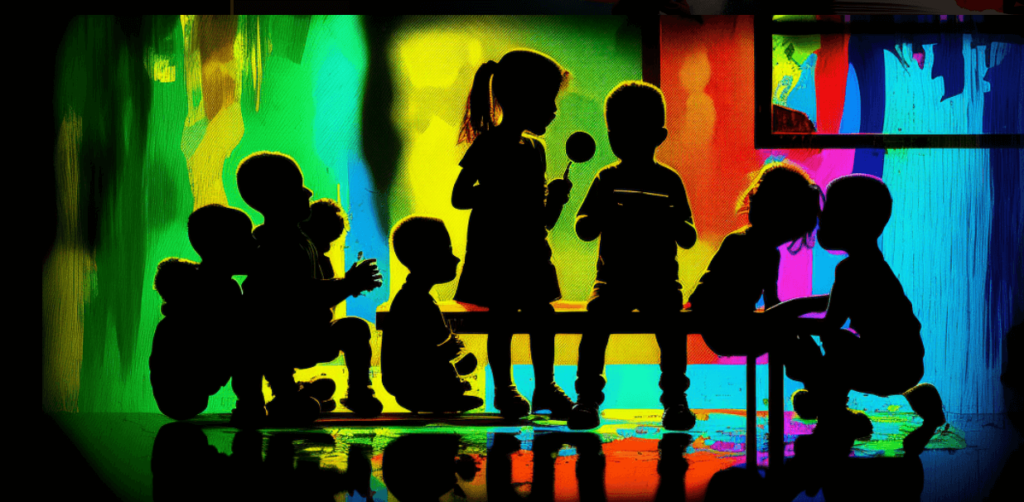
Creating quizzes, tests, and exam questions
Prepping for exams? ChatGPT can generate quiz and test questions on specific topics, so you don’t have to stress about it.
“Create 5 multiple-choice questions about the life cycle of a butterfly for early years students.”
More Prompt Ideas
- “Create 5 questions to assess early years students’ understanding of the alphabet.”
- “Develop 5 questions to test basic math skills for early years students.”
- “Generate 5 questions about a story read in class.”
- “Design 5 questions to evaluate students’ knowledge of shapes.”
- “Compose 5 questions to test students’ understanding of the weather.”
Organizing and tracking student progress
More teacher admin: ChatGPT is super helpful with organizing student data, making it a breeze for you to monitor their progress and performance.
“Suggest a template to track early years students’ progress in reading and math skills.”
More Prompt Ideas
- “Create a template to track students’ reading progress throughout the year.”
- “Design an attendance chart for an early years classroom.”
- “Suggest a method for tracking student behavior in class.”
- “Develop a system for monitoring students’ progress in learning sight words.”
- “Create a template for recording student performance on class assignments.”
Scheduling appointments, meetings, and events
ChatGPT can lend a hand in scheduling, offering suggestions to keep your events (such as teacher-parent meetings) organized and your time managed efficiently.
“Outline a schedule for a school open house event for parents of early years students.”
More Prompt Ideas
- “Outline a schedule for a week of parent-teacher conferences.”
- “Design a calendar of school events for the upcoming semester.”
- “Create a schedule for a field trip to a local museum.”
- “Suggest a timetable for a typical day in an early years classroom.”
- “Plan a week-long schedule of activities for a school spirit week.”
Generating ideas for classroom activities, projects, or themes
Looking for fresh ideas? ChatGPT can come up with creative and engaging activities, keeping your classroom fun and exciting.
“Suggest 3 hands-on activities for teaching early years students about the four seasons.”
More Prompt Ideas
- “Suggest 3 art activities for early years students to explore textures.”
- “Provide 3 ideas for science experiments suitable for early years students.”
- “Come up with 3 group activities to teach early years students about cooperation.”
- “Generate 3 ideas for sensory play activities in an early years classroom.”
- “Offer 3 project ideas to teach early years students about the environment.”
You may also like 📖
- How to use ChatGPT to write engaging Instagram Captions
- How to use ChatGPT to write Love Letters for him or her
- Use ChatGPT to find the Best Kitchen Appliance to buy
- Get ChatGPT to reveal Must-Attend Events for your next trip
- How ChatGPT can help you find your next perfect getaway
- How to use ChatGPT to create a yoga plan that aids weight loss
- Using ChatGPT to spark conversations for dates and couples
- How to use ChatGPT to write the best wedding speech ever
- How to use ChatGPT to get unique Gift Ideas for friends
Assisting in proofreading and editing documents or reports
ChatGPT can help you polish your written materials by spotting errors and suggesting edits, ensuring they’re top-notch. Because we all know students can spot a teacher’s typo miles away.
“Proofread and suggest improvements for a letter to parents about an upcoming field trip.”
More Prompt Ideas
- “Proofread and suggest improvements for a letter copied below to parents about an upcoming fundraiser.”
- “Review and offer feedback on a grant proposal for classroom materials.”
- “Edit and improve a report about a recent school event.”
- “Check and suggest changes for a newsletter article about the school’s achievements.”
- “Revise and enhance a teacher’s guide for implementing a new curriculum.”
Researching educational resources and materials
ChatGPT can assist in finding useful resources and materials for your lesson planning, making your teaching experience even better.
“Find 5 age-appropriate books about friendship for early years students.”
More Prompt Ideas
- “Can you suggest some themes for our next art project”
- “Find 5 online resources for teaching early years students about the life cycle of butterflies.”
- “Suggest 5 age-appropriate books for teaching about diversity and inclusion.”
- “Identify 5 websites that provide free printable worksheets for early years students.”
- “Locate 5 YouTube channels with educational videos suitable for early years classrooms.”
- “Discover 5 creative ideas for teaching early years students about the solar system.”
As you can see ChatGPT can be a game-changer for you by assisting you with various teacher administrative tasks. From drafting emails and announcements to creating templates for lesson plans and worksheets, ChatGPT streamlines the workload.
Now let’s look at some examples from inside the classroom.
ChatGPT in Action in the Classroom

Teaching in the early years phase is a lot like juggling. You’re trying to keep an eye on multiple things at once – managing the classroom, catering to each child’s learning needs, fostering a creative and inclusive environment, and the list goes on. It can be overwhelming, right?
ChatGPT can help lighten the load by taking care of some aspects of generating thoughts and questions. It doesn’t mean you’re off the hook, but it does mean you have more time and energy to focus on what really matters.
Storytelling Sessions
Use ChatGPT to create interactive storytelling sessions. You could start a story and have ChatGPT continue it, or have it create a story from scratch based on your students’ suggestions. For example:
“ChatGPT, can you tell us a story about a pirate who’s afraid of water?”
Other Useful Prompts you could use
- “Can you tell us a story about a brave knight who goes on a quest to find a magical gemstone?”
- “Can you create a story about a group of animals who form a band and go on a musical adventure?”
- “Can you share a story about a tiny robot who discovers a hidden world beneath the city?”
Learning New Concepts
You can use ChatGPT to explain new concepts in an engaging and easy-to-understand way as a teacher. For instance:
“ChatGPT, can you explain why leaves change color in the fall?”
Other Useful Prompts you could use
- “Can you explain the difference between a fruit and a vegetable in a simple way?”
- “Could you help us understand how plants make their own food through photosynthesis?”
- “Can you describe how rainbows are formed and why they have different colors?”
Revision Quizzes
Use ChatGPT to create fun revision quizzes. It can ask the questions, and your students can take turns answering. For example:
“Can you ask us some questions about what we learned in our lesson on the water cycle?”
Other Useful Prompts you could use
- “Can you ask us some questions about what we learned in our lesson on the life cycle of a frog?”
- “Can you create a fun quiz to help us review our understanding of the different types of weather?”
- “Can you ask us questions about the continents and oceans we learned about last week?”
Creative Writing
Use ChatGPT to spark your students’ creativity. It could provide the first line of a story, and your students can continue from there. For instance:
“Can you give me an interesting opening sentence for a story about a magic carpet?”
You may also like 📖
Or you can even ask ChatGPT to come up with the story prompt himself, like this:
“Provide 2 creative writing story prompts suitable for early learning students.”
The AI will come up with something like this:
“The Secret Garden Party: One sunny day, you discover a hidden garden where all the plants and flowers can talk! Write a story about the conversations you have with them and the fun activities you enjoy together.”
How to use ChatGPT to 10x your Instagram account in 7 steps

We teach you how to build your own super-useful prompts
View our Ebook, with a step-by-step
walkthrough to conquer Instagram using ChatGPT even if you are not tech-savvy
Exploring Further
Let’s dive a little deeper into how AI, and specifically ChatGPT, can be a game-changer in nurturing communication, creativity, and learning in the early years phase for you as a teacher.
Enhancing Communication
First off, let’s talk about communication. It’s an essential skill that children start developing at this stage. But as you know, not all children are the same. Some are chatterboxes, while others might be a little more on the quiet side.
Thinking about ideas for questions to ask your students can be mentally taxing.
Show and Tell
Take, for instance, a ‘Show and Tell’ session.
You could use ChatGPT to ask questions about the item the child is presenting that prompts them to communicate more about it.
Expressing Feelings
You could use ChatGPT to generate questions that help children express and understand their feelings. For example:
“Could you give me 3 questions to ask Tommy about how he feels about his trip to the farm and what was the most exciting part for him?””
“Provide 2 questions for my students to explore and express their emotions. “
You may also like 📖
- How to use ChatGPT to create Fitness Plans that get results quick
- How to use ChatGPT to create a Budget that actually works
- Ultimate Guide: using ChatGPT to Plan your next Trip
- Unleashing the power of ChatGPT to master Chess
- How to use ChatGPT to reply to emails in your 9-5 job like a pro
- Writing the Perfect Cold Email with ChatGPT: A Modern Spin on the AIDA Model
- How to use ChatGPT to create custom Meal Plans that work
- How ChatGPT can help you Memorize Anything quickly
- How ChatGPT can help you Write your Fiction novel 10x faster
- How to use ChatGPT to Summarize Books
Creating a Dialogue
You could prompt ChatGPT to role-play a dialogue with a student – which you then enact – taking away your mental strain of coming up with fresh new lines.
This could be a conversation between two characters from a story, two historical figures, or even two animals!
“ChatGPT, can you pretend to be the Sun and have a conversation with Lucy who is pretending to be the Moon?”
Understanding Perspectives:
You could prompt ChatGPT to ask students questions that make them consider different perspectives. Example:
“Provide example questions for students to explore various viewpoints within the Three Little Pigs story.”
Finally, learning. This is where AI truly shines. AI can personalize learning for each student, adapting to their pace and style. It can provide immediate feedback and explanations, reinforcing learning and filling in knowledge gaps.
The beauty of AI is that it’s flexible and adaptable. It can be whatever you need it to be, making it a valuable tool in your teaching arsenal.
Facilitating Learning
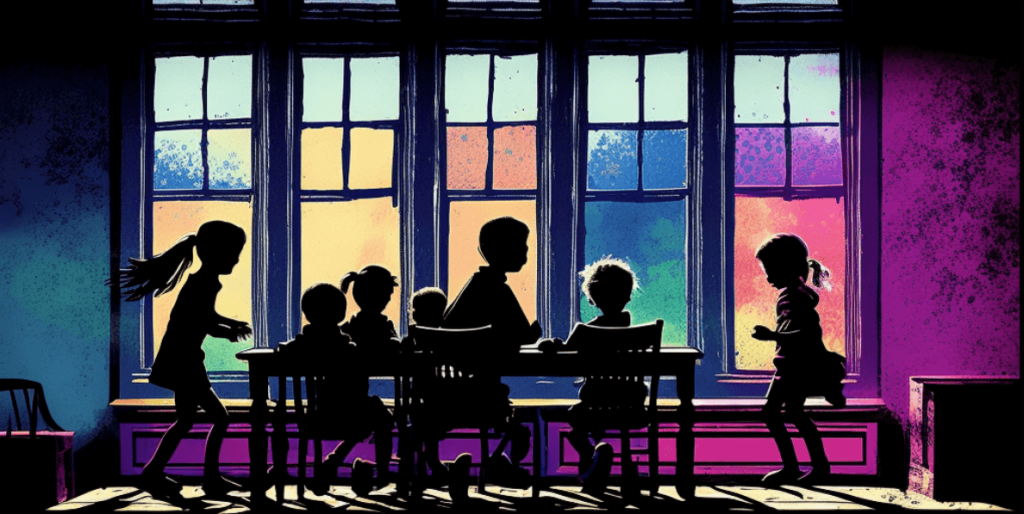
For example, you could use ChatGPT for a fun quiz session. ChatGPT asks the questions, and your students take turns to answer. If a student gets a question wrong, ChatGPT can immediately provide the correct answer and a simple explanation, turning a moment of failure into an opportunity for learning.
There are three main advantages – personalized learning, accessibility, and adaptive learning experiences.
Personalized Learning
Each child is unique. They have their own interests, strengths, weaknesses, and learning pace. ChatGPT can adapt to each child’s needs, offering a personalized learning experience. Teachers may find it a struggle to accommodate all these aspects.
Let’s say Johnny is fascinated with space, but Emma is more interested in animals. You could use ChatGPT to engage Johnny in a discussion about the planets, while simultaneously helping Emma explore the animal kingdom. It’s like having a personal tutor for each student, ensuring that learning is relevant and engaging for everyone.
Other Useful Prompts you could use
- If a child is interested in dinosaurs, you could prompt ChatGPT with: “ChatGPT, can you tell us about different types of dinosaurs and their special characteristics?“
- For a student who enjoys fairy tales, ask: “Could you create a unique fairy tale with a princess, a dragon, and a magic potion?”
- For a child interested in space, you might prompt: “Could you explain how astronauts live and work in a space station?“
Accessibility
Useful Prompts you could use
- For after-school learning, you could suggest: “ChatGPT, can you provide a summary and key facts about the water cycle for Sarah to review?”
- If a student wants to learn a new skill, ask: “ChatGPT, can you explain the basics of playing chess?“
- For weekend exploration, try: “ChatGPT, could you describe what life is like in the Amazon Rainforest?“
Adaptive Learning Experiences
ChatGPT can adapt to a child’s learning pace. If a concept needs to be explained several times or in different ways, ChatGPT can do that without any impatience or judgment. Yes, no teacher mood swings with AI.
Suppose Tommy is having trouble understanding the concept of addition. ChatGPT can explain it in different ways, use examples, or even turn it into a fun game, ensuring Tommy grasps the concept at his own pace.
Other Useful Prompts you could use
- If a child is having trouble with multiplication, you could prompt: “ChatGPT, can you explain multiplication using examples with apples and oranges?”
- For a student who’s struggling with the concept of time, ask: “ChatGPT, can you explain the concept of time using examples of daily activities?”
- If a student is finding it hard to understand the concept of gravity, try: “ChatGPT, can you explain what gravity is in a simple and fun way?”
Remember, the goal of using ChatGPT in the classroom is to augment and enhance your teaching, providing a more personalized, accessible, and adaptive learning experience for your students.
FAQs on How Teachers Can Use ChatGPT
How can ChatGPT assist teachers in creating classroom activities?
Describe your subject and grade, and ChatGPT can suggest interactive activities. For instance, “I’m a math teacher for 3rd grade. What’s a fun fraction activity?”
Are there ways for a teacher to use ChatGPT to address diverse learning needs?
Definitely! ChatGPT can provide strategies and tools for a teacher to cater to various learning styles. Try: “Recommend resources for teaching auditory learners.”
Can ChatGPT help teachers with grading and assessment?
Yes! While it can’t grade for you, ChatGPT can offer a teacher tips on effective assessment methods and rubrics. Ask, “How can I design a fair grading rubric for a project?”
How can a teacher utilize ChatGPT for professional development?
ChatGPT can suggest online courses, workshops, and reading materials to help a teacher grow in their profession. Prompt: “Which online courses are popular for teacher training?”
Can ChatGPT provide teachers with classroom management advice?
Yes! From handling disruptions to building a positive environment, ChatGPT can guide a teacher with best practices. Dive in with: “Share some classroom management techniques.”
Can a teacher seek guidance from ChatGPT on integrating technology into lessons?
Yes! ChatGPT can recommend tech tools, apps, and strategies for a teacher to make lessons more interactive. Example: “Suggest some educational apps for history lessons.”
How can ChatGPT assist teachers in communicating with parents?
ChatGPT can offer tips on effective parent-teacher communication, from emails to conferences. Try: “How can I prepare for a productive parent-teacher meeting?”
Can ChatGPT provide resources for teachers to address students’ well-being?
Certainly! ChatGPT can guide a teacher to resources on topics like mental health, bullying, and emotional development. Ask, “How can I support students facing anxiety?”
Conclusion and final thoughts
And there we have it! From understanding how AI is transforming the educational landscape, to exploring the many ways in which ChatGPT can be used to enhance communication, creativity, and learning, we’ve covered quite a bit of ground.
As we’ve seen, ChatGPT offers a range of benefits for a teacher and the early years classroom.
Incorporating AI tools like ChatGPT in the classroom doesn’t mean replacing teachers or traditional teaching methods. It’s a sidekick, a support, a means to enhance your teaching and engage your students in new and exciting ways.
So, are you ready to embrace the future of teaching with ChatGPT?
